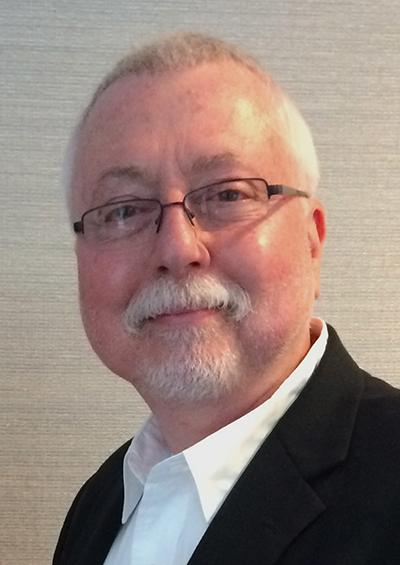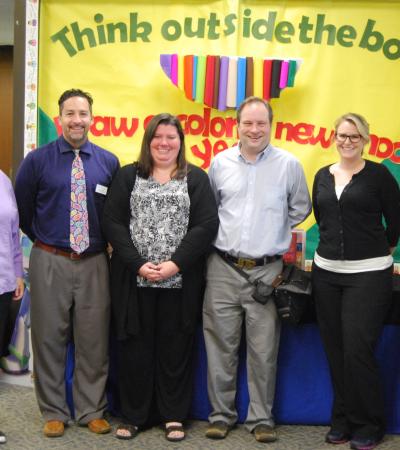In 2014, a partnership between the American Library Association (ALA) and The Harwood Institute for Public Innovation resulted in Libraries Transforming Communities (LTC), an ALA initiative that provides resources, training and support for libraries to engage with their communities in new ways using the Harwood Institute's "turning outward" approach. Since then, dozens of libraries across the country — mainly public and academic libraries — have started using these tools to communicate, partner and lead more effectively. Ken Stewart of Blue Valley (Kan.) High School has put the LTC tools to work in his school library — with significant results for his library, his school community and him personally. We chatted with Stewart about how he is using the “turning outward” approach and why he thinks it’s a fit for the K-12 world.
Programming Librarian: Tell us how you got started with the “turning outward” approach.
Ken Stewart: I was invited to attend the first ALA-Harwood Institute training in Chicago back in 2013. It was a three-day lab, and about halfway through the second day, I just had this epiphany. I realized that this process would really blow the doors off my library. It’s a way to open up your program by inviting the community’s input through a deliberate process, not just in casual conversations here and there. I kept thinking about which groups we could talk to and how we

could address different issues. It snowballed from there.
PL: How did you get started once you got home from the training?
KS: The first step was collecting everybody’s input. I set up four different groups — students, teachers, administrators and parents — and I asked them questions like “What are your aspirations for your school library?” “What are the possible obstacles?” “What are solutions for that?” For students, I asked student council members because, one, they were easy to get ahold of, and two, they will tell you exactly what they think. Teachers were random by department, and then I surveyed all the administrators at one meeting. The parents were the most difficult to find, so I talked with them at “Meet the Teacher Night.” I approached them individually as they were coming down the hall and gave them a handout with the questions and my email address. I also asked various parents that I see in school and parents who had kids who have already graduated.
Then I set up a lib-guide for the answers. I color-coded those, again, by student, teacher, administrator and parent. The answers were all anonymous — that’s very important — but they were separated by color so you could see which category of person said what. I posted the responses in the library for one month so everyone could review them. Students and teachers would come up and talk about it, and we would add their comments.
I guaranteed that everyone who took part would get feedback. So everybody — kids, teachers, administrators and parents — saw all of the responses, organized not by group, but by aspirations, obstacles and solutions. They also got follow-up emails describing what we did to address these things.
PL: What makes these “aspirations conversations” so helpful?
KS: It works because it’s not a finger-pointing session. You’re asking people to talk about what they want their community to look like. Every person you ask is an expert in their field, so they all have ideas to contribute. Parents are experts with their kids. Kids are experts with their school experience.
PL: What did you learn about your community’s aspirations?
KS: After I collected all the aspirations and typed them up, I sat down and sorted them into themes. For our library, the themes turned out to be resources/technology, instruction, teachers, atmosphere/facility, funding and staffing. Staffing was a concern with each of the four groups. It was useful to know that parents were really concerned about that, and to make that connection with them. When our budget is being cut, the kids’ response is, “Let’s have a bake sale.” Well that’s great, but if you need to buy a $1,000 database, that’s going to take a lot of brownies. But when you have a parent say, “If your budget is cut, let me know and I will go to the Board of Education meeting and speak on your behalf,” you know you’ve hit home.
PL: Have you received more of those offers since you started doing this work? Are people more willing to go to bat for you since you started reaching out to them?
KS: Absolutely. Our administrators are going to bat for us, too. We’re now truly embedded in this school. Now we’re not the ones going to the school board and saying, “I need this much money” for this or that. The administrators are. We brought in the voices of the community and showed the administrators what our community wants, and that’s powerful information. The principal and administration know where I’m coming from now.
PL: That must give you a lot of leverage.
KS: What’s really great is when administrators see it working, and when parents can see the materials that we purchase — that they asked for — being used directly for the benefit of their kids. I can see why so many public libraries use this approach. You are actually asking the people, “OK, if you want something besides books, what exactly do you want us to do here?” And some might want a makerspace and some might not, but you are getting input from the people who actually use the place.
PL: What has changed in your library since you’ve started this work in 2013?
KS: Well, we’ve been able to purchase a database we never would have been able to purchase. The physical layout of the library has also changed. Students come to the library now and have access to 83 computers. After starting this “turning outward” process, we were able to propose re-laying out the library. It wasn’t cheap, but it’s what people were asking for. In the morning, before school, we now average 140 to 160 kids in here. The number continues to go up year after year. They like being in here. We’re fun! And we have technology, and we’re here to help them.
PL: I’m curious how this process has affected you personally. Has it changed the way you approach your job?
KS: Oh, definitely. I’m more open. The doors are thrown wide open between us and teachers now because they have more buy-in into our program. We’re open to listening to what they want and what they need for their kids. I think we had a very good program before this, but it is stronger now because our community has access to it. Needless to say, I think this is the best thing since sliced bread.
We all have one goal and it’s the betterment of our kids. Don’t get me wrong, it’s hard work. You are running the whole time. But that’s what we’re here for. When people ask us for a job description, it’s like “Where do you want me to start?”



